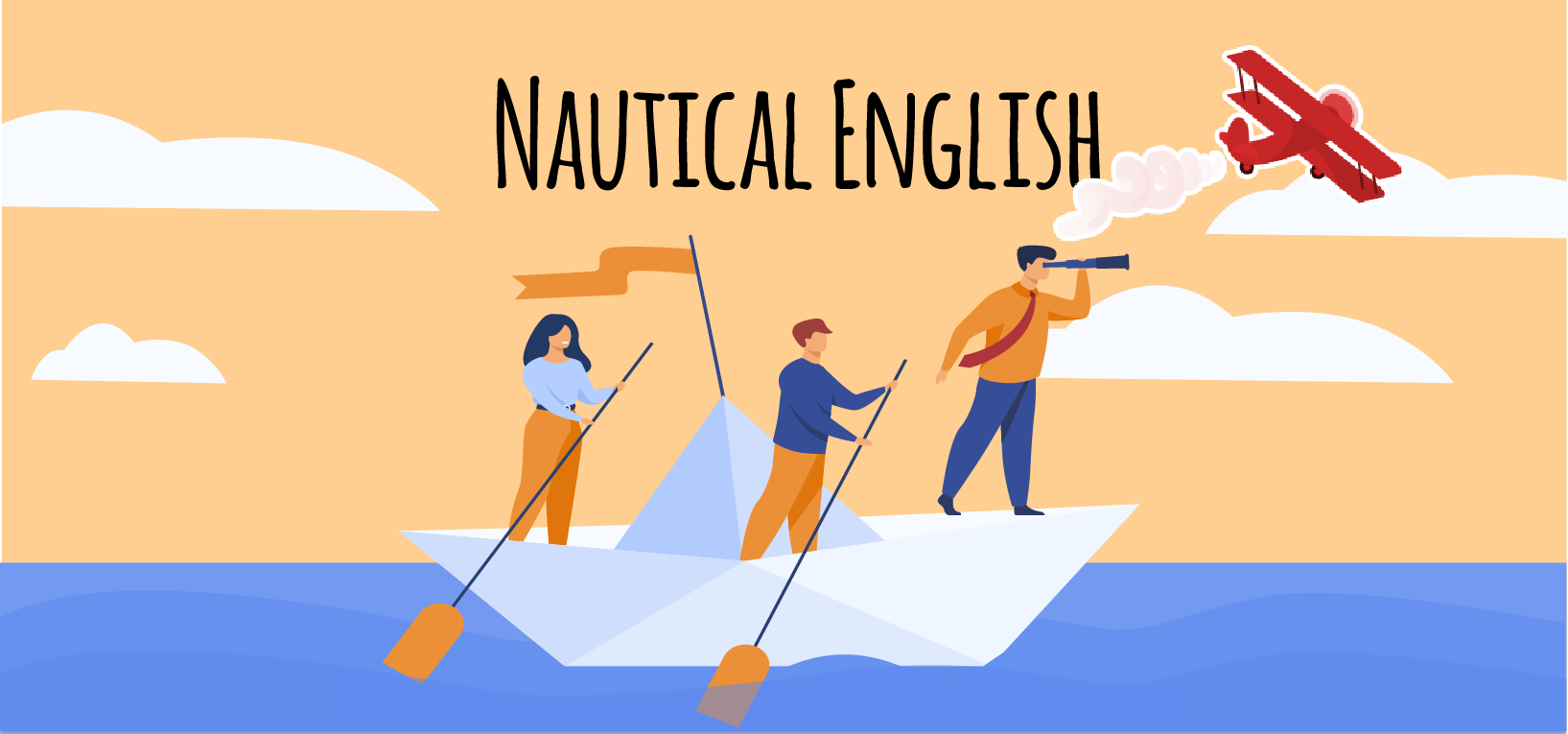Nautical English

Standard basic naval English vocabulary.
UPGRADE
Investigating we have found this course divided into two videos of the same duration where a nice teacher guides us through a tour of standard nautical English. You can find them on the YouTube channel of a language school and it is undoubtedly the best content you will find on the standard naval English network, or the official English used in ship communications.
In today’s post we are going to talk about a very specific field: nautical English . Surely this past summer, or on previous occasions, you have had the opportunity to ride a boat-motorboat-sailboat or something similar. You have sailed the seas like true sailors; But have you ever stopped to think what should be done or said if something happens while you are on the boat?
Hence, we wanted to do this introductory post on standard nautical English for maritime communications, because we want you to know what to say via radio if something happens to you. (Click here if you want to go directly to the IMO Standard Phrases for radio communications)
Why is English used in maritime communications?
English has taken hold in the maritime sector. Some of the reasons that have led to this being so are:
- It is the first choice of study as a second language.
- Language used for international transport.
- It is the most used language in radio communications.
- Knowledge of English is a requirement to be able to embark
Once it was “agreed” that English was the language used, they encountered a problem, and that is that the sailors, controllers, fishing boats, etc., used the language too relaxed, endangering maritime safety. This situation forced the International Maritime Organization (IMO) to take action on the matter and intervene.
Why was standard nautical English created?
They considered that English having been accepted as an international language in maritime communications, they should create a register of phrases and expressions accepted for naval use . The aim was to minimize possible misinterpretations of communications and increase maritime safety. This new vocabulary should be a must for all those who worked in any position, whether on land or sea.
When a ship was sailing and needed to communicate either with another ship or with a port, it would simply communicate; but this could reach its receiver altered by various causes: interference, noise or interruptions due to the loss of the radio signal. These factors could cause the receiver to receive an ambiguous, incomplete message, causing communication errors.
For these reasons, it was considered necessary to create a specific vocabulary, guidelines and a structure of the sentences.
One of the clearest examples ..
It is when a pilot must board a ship : beforehand he has to establish communication with the ship’s command bridge. The fact that aspects such as intonation, gestural language, etc. came into play, could often be the cause of some misunderstanding.
In the case of gestural language, this would be affected if we encountered adverse circumstances such as closed night, bad weather and poor visibility. With this assumption, we have lost the support of one of the elements that gives us information.
If the pilot uses standard English, he would completely eliminate that lack of information,
using the message flags which are:
- Instruction
- Advice
- Warning
- Information
- Question
- Answer
- Request
- Intention
These indicators fulfill the following missions:
- Anticipation of the character or content of the message
- Organization in communications
- Elimination of intonation
IMO standard phrases
“Collection and Dissemination of Traffic Data in Normal Situations”
Next, we will make a summary of those phrases most used in maritime communications and that can be of great help to you.
| What is your position? | ¿Cuál es su posición? |
| My position is… | Mi posición es… |
| What ir your present course and speed? | ¿Cuáles son su rumbo y su velocidad actuales? |
| My present course is … degrees, my speed is …. knots. | Mi rumbo actual es de … grados, y la velocidad es de … nudos |
| Are you under way? | ¿Está usted navegando? |
| Yes, I am underway | Sí, estoy navegando |
| What is your cargo? | ¿Qué tipo de carga tiene? |
| My cargo is… | Mi carga es… |
| Do you carry any dangerous goods? | ¿Transporta mercancías peligrosas? |
| Yes, I carry the following dangerous goods: … kilograms/ton IMO-class … | Sí, estoy transportando las siguientes mercancías peligrosas: … kilogramos/toneladas de la mercancía de la clase… |
“Nautical Notices”
| Unknown objetc(s) in position | Objeto(s) desconocido(s) en la situación |
| Dangerous wreck/obstruction located in position …. marked by … (type) buoy. | Restos peligrosos del naufragio/obstrucción en la situación … marcada por la boya … (tipo) |
| Depth of water not sufficient in position. | La profundidad del agua no es suficiente en la situación. |
| Navigation closed in area | La zona está cerrada a la navegación. |
“Meteorological Warnings”
| Gale warning/storm warning was issued at … UTC starting at … UTC. | Aviso de temporal/tempestad emitido a las … horas UTC previsto para las … horas UTC. |
| Wind direction … (cardinal and half cardinal point, force Beaufort … in position | La dirección del viento es … (punto cardinal), y la fuerza … en la escala Beaufort. |
Visibility in position …
| Visibilidad en la situación…
|
Sea/swell in position…
| Olas/mar de fondo en la situación…
|
“Identification Request”
| Do you require navegational assistance to reach? | ¿Necesita asistencia para la navegación para llegar a…? |
| Yes, I require navegational assistance | Sí, necesito asistencia de navegación |
| What is your position? | ¿Cuál es su posición? |
| My position is bearing … degrees … distance … kilometres/nautical miles from … | Mi posición es la siguiente: demora … grados, distancia de… kilómetros/millas marinas de… |
| How was your position obtained? | ¿Cómo ha obtenido su posición? |
| My position was obtained by GPS/RADAR/cross-bearing… | Mi situación ha sido obtenida por GPS/RADAR/demoras simultáneas… |
| What is your present course and speed? | ¿Cuáles son su rumbo y su velocidad actuales? |
| My present course is… degrees, my speed is … knots. | Mi rumbo actual es de … grados, y mi velocidad, de … nudos. |
| Is your radar in operation? | ¿Funciona su radar? |
| Yes, my radar is in operation | Sí, mi radar funciona |
With these indications, you could establish radio communications without any problem with the Maritime Traffic Service (STM) . The most distinctive feature of these sentences is the absence of complex sentences, conditionals or verb tenses.
They are very simple phrases that anyone can need in case we find ourselves in a situation as we related at the beginning. We hope that although this post has surprised you by its content, you will know how to value the valuable information it contains in case of emergency.
We hope that it is very useful to you, and if your purpose is to obtain an official language degree, we leave you the next available calls .



